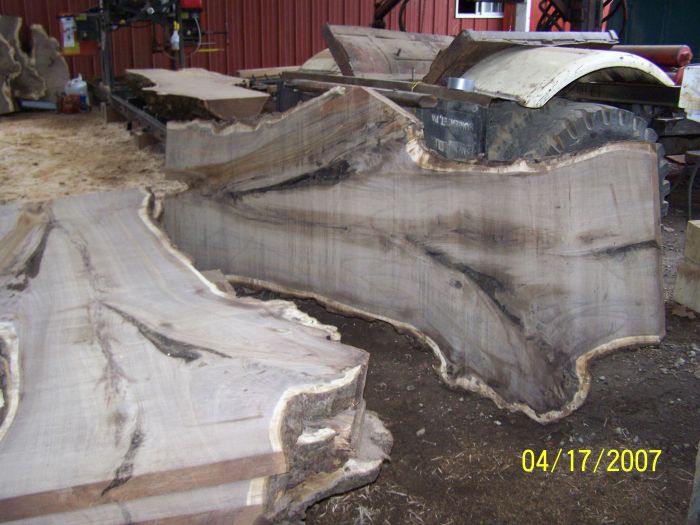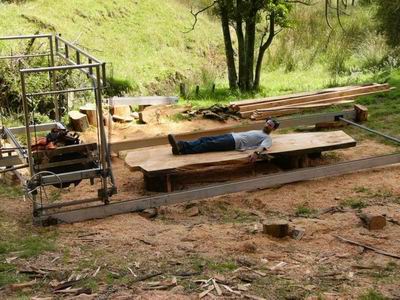Question
I need a good rule of thumb when it comes to chainsaws. I am thinking of
upgrading the bar on my chainsaw to do some milling and want to know how big I can go. If I go too big is it going to be more than it can handle therefore affecting performance? I am working with a 40cc 2 cycle. Any thoughts would be appreciated.
Forum Responses
(Sawing and Drying Forum)
From contributor M:
Yes, bar length does impact performance. It takes more power to push a chain around a longer bar. Each manufacturer will have a maximum bar length that can be used for each model. Most companies have two lines of saws, the home or hobbyist grade and the professional grade. A saw with 40 cc saw is a small lightweight machine that would safely take a 16 or maybe 20Ē bar. If you want to cut bigger logs, get a bigger professional grade saw that can accommodate a large bar and heavier chain, otherwise you can destroy the saw or hurt yourself.
My other two saws are a Husqvarna 395xp, and a Stihl MS880. The Husky has just as much power as the Stihl, but the Stihl has a lot more torque for milling huge trees. My business partner also has a 395, and we take the two of them together and run a 66" double Powerhead chainsaw mill when we get large logs in. People joke about this and think we jog with the speed of the cut, but it realy is not a fast process even with this much power. I have read articles saying that the Lucas slaber takes about 7 minutes to get through a 4' wide x 8' long cut depending on the hardness, and it takes me about 2-3 minutes.
I have bars up to 6' for my 395, and 880, but both of them typically always have a 20" bar on for really fast firewood cutting. I have about 5,000 or so square feet of indoor storage at a friendís firewood yard and I pay my rent by cross-cutting all his firewood. Every month I spend a day or two cutting about 8-10 cords a day with these two saws.
When I first started chainsaw milling I had two Husqvarna 394's. Vibration is the enemy on these saws, and milling gives long periods of high revving cuts. The first 394 eventually had every thread on it strip out, and the pull start, the top cover, and part of the bottom was held together with a bungee cord. It eventually caught on fire and that was the end of that!
Both of the 394's had gone through countless motors, mufflers, carburetors, and every nut and bolt you can think of. I still have the second 394 but it is due in for its third or fourth motor, Iíve lost track. They were both used when I got them, but it puts you to the test to learn every little thing about them.
Here are some 4'+ wide black walnut slabs we cut a while back with the rig. The crotch grains appear heavily bark included, but really not at all, they are just soaked in those areas.

